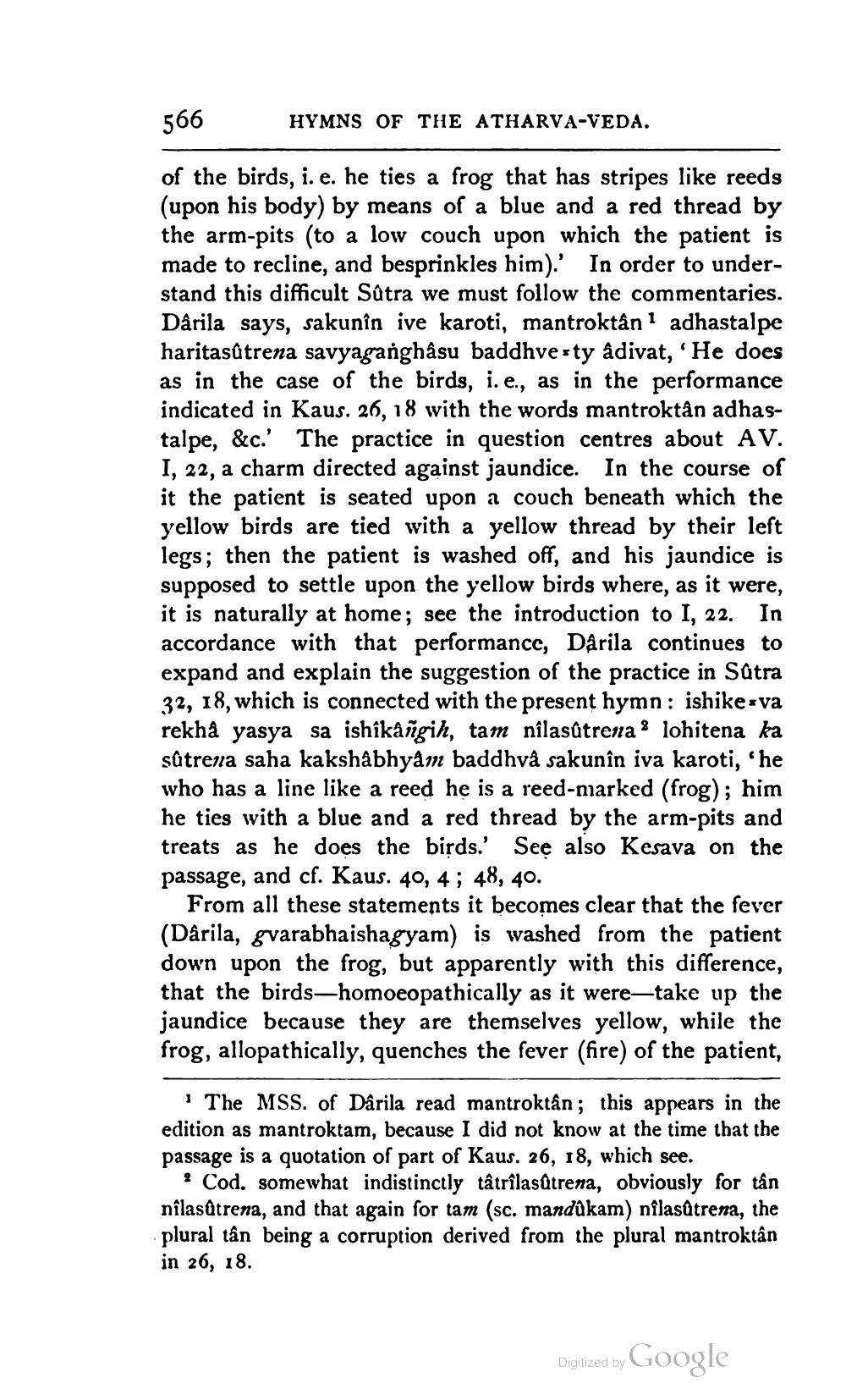________________
566
HYMNS OF THE ATHARVA-VEDA.
of the birds, i. e. he ties a frog that has stripes like reeds (upon his body) by means of a blue and a red thread by the arm-pits (to a low couch upon which the patient is made to recline, and besprinkles him).' In order to understand this difficult Sûtra we must follow the commentaries. Darila says, sakunin ive karoti, mantroktâni adhastalpe haritasůtrena savyaganghâsu baddhvesty a divat, 'He does as in the case of the birds, i.e., as in the performance indicated in Kaus. 26,18 with the words mantroktan adhastalpe, &c.' The practice in question centres about AV. I, 22, a charm directed against jaundice. In the course of it the patient is seated upon a couch beneath which the yellow birds are tied with a yellow thread by their left legs; then the patient is washed off, and his jaundice is supposed to settle upon the yellow birds where, as it were, it is naturally at home; see the introduction to I, 22. In accordance with that performance, Darila continues to expand and explain the suggestion of the practice in Sutra 32, 18, which is connected with the present hymn: ishikesva rekhả yasya sa ishikåñgih, tam nilasůtrena ? lohitena ka sütrenia saha kakshâbhyam baddhvå sakunîn iva karoti, 'he who has a line like a reed he is a reed-marked (frog); him he ties with a blue and a red thread by the arm-pits and treats as he does the birds. See also Kesava on the passage, and cf. Kaus. 40, 4; 48, 40.
From all these statements it becomes clear that the fever (Dârila, gvarabhaishagyam) is washed from the patient down upon the frog, but apparently with this difference, that the birds—homoeopathically as it were-take up the jaundice because they are themselves yellow, while the frog, allopathically, quenches the fever (fire) of the patient,
"The MSS. of Dârila read mantroktân; this appears in the edition as mantroktam, because I did not know at the time that the passage is a quotation of part of Kaus. 26, 18, which see.
. Cod. somewhat indistinctly tâtrîlasâtrena, obviously for tân nîlasâtrena, and that again for tam (sc. mandúkam) nilasâtrena, the plural tân being a corruption derived from the plural mantroktân in 26, 18.
Digized by Google




